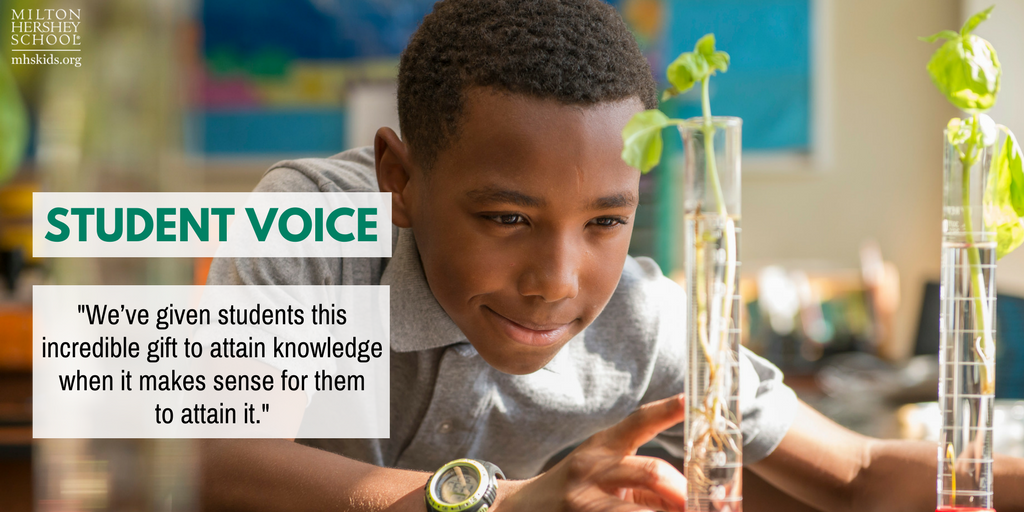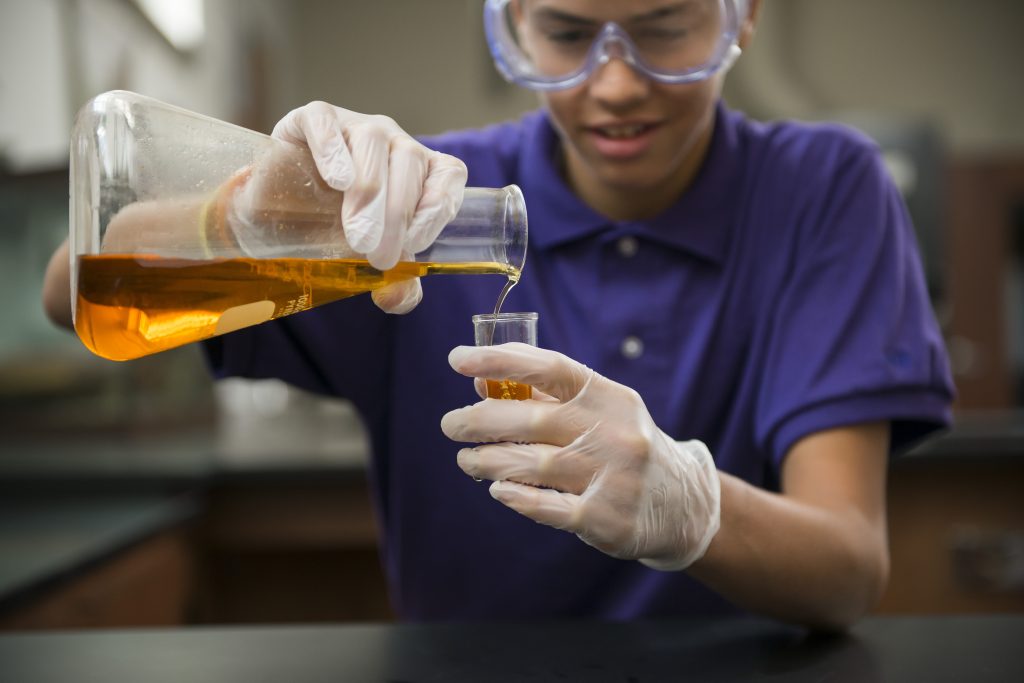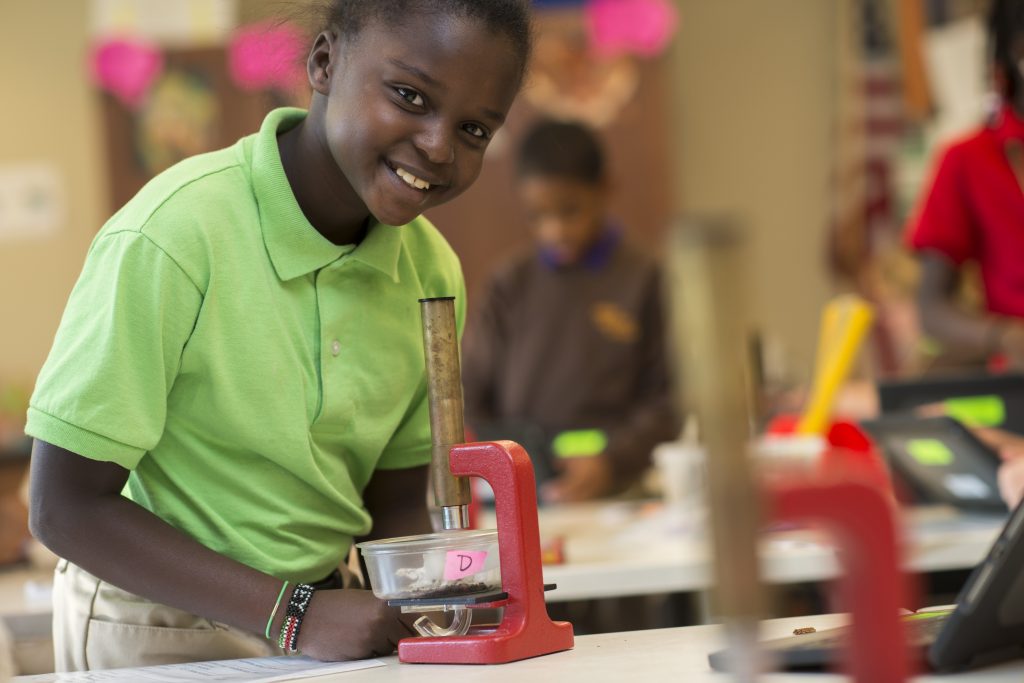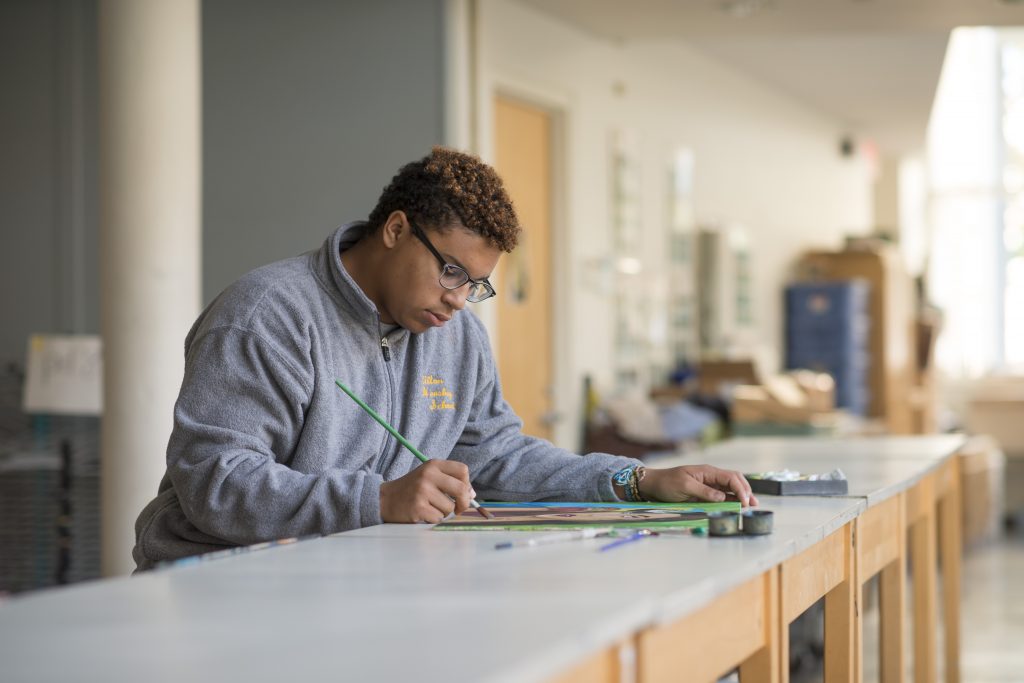Student Voice and Student Choice: The 21st Century Approach to Teaching and Learning
To give students freedom in the classroom, Milton Hershey School is committed to problem-based learning. Through open-ended challenges, students at all grade levels choose how they’re going to solve a problem and articulate how they’re going to do it—increasing student voice and student choice in the classroom.
“We’ve gotten more committed to standardized curriculum, which is wonderful because it allows students to proceed to the next grade level with a particular set of knowledge and skills,” said Dr. Jaunine Fouché, science curriculum supervisor at MHS. “The downside of [standardized curriculum] is that it doesn’t allow for student voice and student choice.”
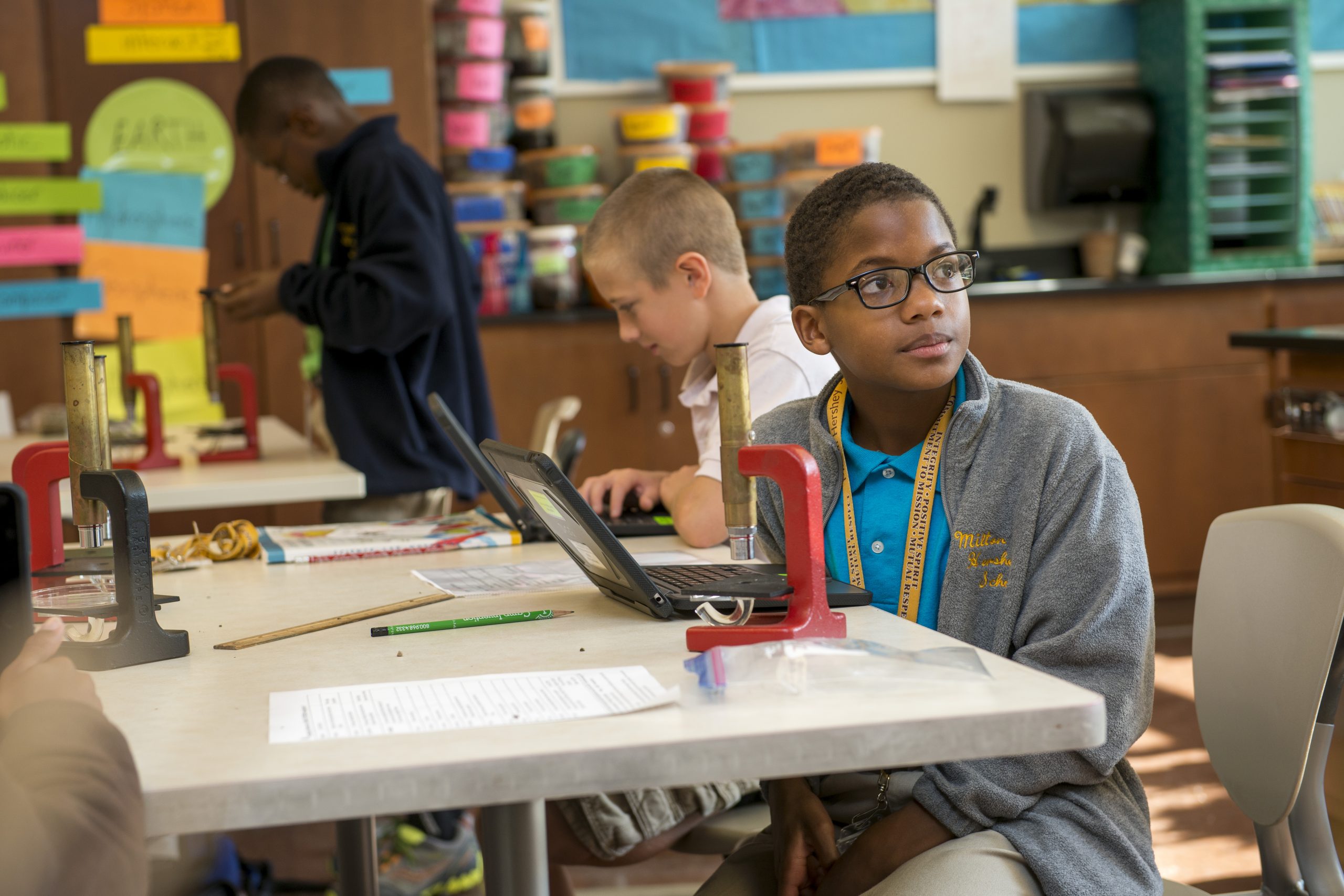
To create a balance between prescribed curriculum and open-ended, problem-based learning, our teachers and staff focus on foundational, 21st-century skills. Students learn that knowledge and expertise aren’t exclusive to particular fields, and foundational skills like empathy, critical thinking, and expression are necessary in every career.
“You can be an English major but still get involved in STEM activities. The two are not exclusive. There are elements of STEM fields that apply everywhere,” Fouché explained.
As MHS continues to give every student access to STEM activities and establishes our problem-based approach to learning, see how students benefit from more choice and voice in the classroom.
Switching the Mindset
In the past, students have been accustomed to internalizing their instruction, and eventually, once they’ve learned enough, applying what they know. Students would typically only apply mathematical skills in math-related settings, and only learn concepts in a prescribed order. But what if 21st-century students are faced with a challenge and need a specific piece of knowledge before they’ve actually learned it?
“With problem-based learning opportunities, we’ve given students this incredible gift to attain knowledge when it makes sense for them to attain it. Although the prescribed curriculum is incredibly essential, we now have the best of both worlds,” Fouché said. “For MHS students, being trusted enough to be empowered with voice and choice [aligns well] with our social and emotional learning curriculum.”
Students learn to apply skills from each class to solve a wide array of problems in fresh, innovative ways.
Projects of the Heart
To classify a lesson as problem-based learning, it must include an open-ended challenge. Students quickly realize there isn’t one way to solve the problem, which is where student voice and student choice come into play. They complete these open-ended challenges in all subject areas through a variety of lessons, including:
- STEAM lessons that incorporate authentic problem-solving such as virtual reality exercises
- Design thinking activities in the elementary Innovation Lab
- Project-based learning assignments such as our high schoolers’ financial literacy unit
- Agricultural and Environmental Education (AEE) projects that support entrepreneurial instruction such as the STEAM Project Market—a student-run stand that highlights the importance of product development and marketing by selling produce, student artwork, and products that result from design thinking projects.
While these projects are related to the classroom, they also allow students to apply content in ways that aren’t prescribed in the curriculum. They become motivated to tackle self-identified challenges, making the learning process more engaging and rewarding.
“How do we prepare students for the unknown, ever-changing workforce? We allow them the flexibility to apply what they know and show what they can do in novel ways that are meaningful to them. They [become] projects of the heart,” said Fouché.
Support for Students and Staff
The key to these projects of the heart is engaging students while maintaining high expectations, clear structure, and academic rigor. To do this, MHS staff receive additional training and high-quality professional development. They are trained to teach students the best steps for completing problem-based learning initiatives, so students have clear expectations in a way that feels comfortable for everyone.
“For teachers who might be used to knowing the correct answers, shifting their classroom approach to include this open-ended opportunity can sometimes be intimidating,” said Fouché. “But it’s intimidating for kids, too. It’s a wonderful opportunity for teachers and students to engage in that discomfort together.”
While many students are eager for this level of freedom, others may need more support. As MHS embeds problem-based learning into our culture, students have multiple opportunities to approach learning in an open-ended way. Over time, the approach begins to feel less foreign and less uncomfortable.
As students get used to expressing their voice and their choice in the classroom, they develop the foundational, 21st-century skills needed to solve real-world challenges in a variety of disciplines.


